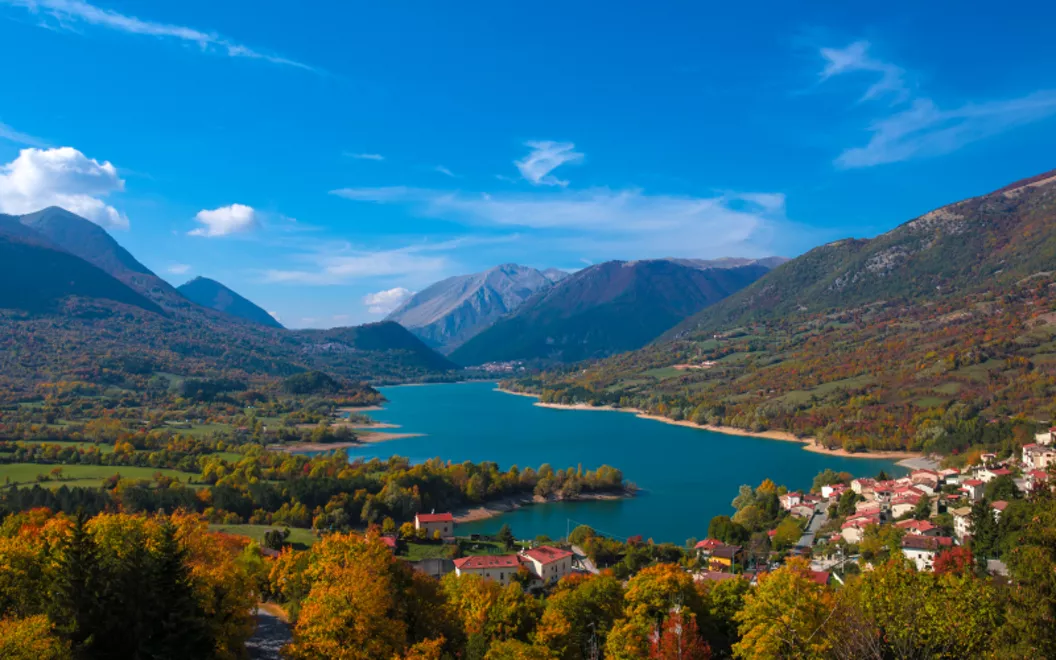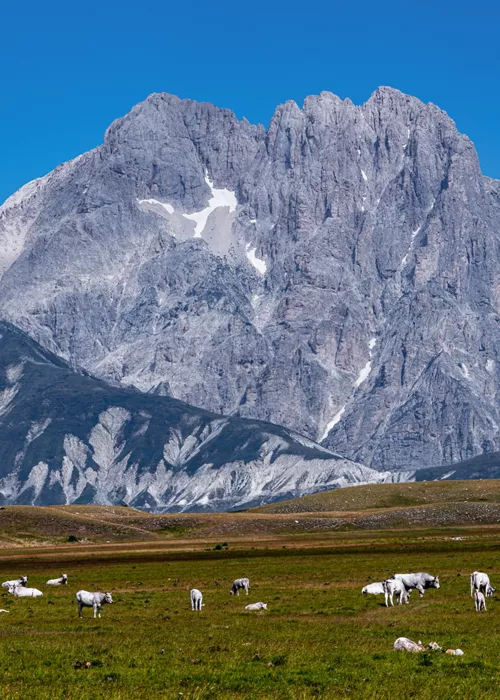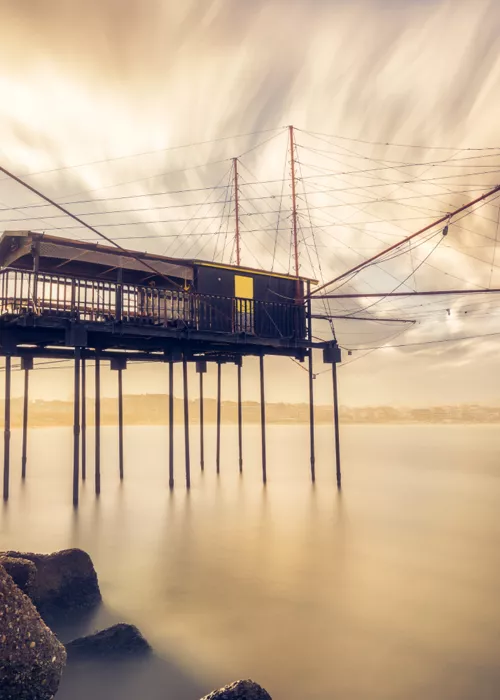The stages of the Via dei Lupi in the Abruzzo, Lazio and Molise National Park
3 minutes
"Wolves are free: they bow to the laws of the pack, but when there is no more room among their brothers they embrace the solitary life and go in search of new spaces". So wrote Carlo Grande in his book The Way of the Wolves.
It is not only a beautiful story to read, but also an adventure to experience: the Via dei Lupi ("Way of the Wolves") is a path of knowledge and immersion in the nature of the Central Apennines.
The Via dei Lupi route
The Via dei Lupi route crosses four Regional Protected Areas of the Lazio and Abruzzo Apennines and stretches over 14 stages, from Tivoli to Civitella Alfedena, with a total length of 215 kilometres of pure wonder.
The route also includes a loop within the Abruzzo, Lazio and Molise National Park in five wonderful stages. It’s unforgettable for its beauty and biodiversity.
Discovering the Apennine wolf
The Apennine wolf, an animal that symbolises wildlife, is undoubtedly a fascinating presence in an already fascinating land: it reproduces in a stable and regular manner, feeds almost exclusively on the natural prey present in the various environments that typify the area, and becomes a natural promoter of rewilding, the return to a wild and natural state of some areas thanks to policies aimed at safeguarding the landscape.
The objective of the Via dei Lupi is to help wilderness regain its space, allowing animals to return to their territories.
To achieve this, it is important to re-naturalise the protected areas with ad hoc spaces, restructuring pastures and small roads and creating a new form of eco-sustainable tourism.
The Abruzzo stages of the Via dei Lupi
The stages of the Via dei Lupi in Abruzzo involve several destinations of unquestionable charm: the first is the Morino area with the Zompo Lo Schioppo Reserve, in the Roveto Valley, where the highest natural waterfall in the Apennines cascades down the valley from the summits of the Cantari Mountains, with a drop of over 80 metres.
The waterfall is a breathtaking spectacle; it owes its name to the dialect word “zompo”, meaning jump, and is located at the foot of the beautiful Viglio and Crepacuore beech forests, a protected area with a Regional Nature Reserve covering an area of 1025 hectares. The forest within it is very atmospheric.
The second stage is in Civita D'Antino, known for the beauty of its surroundings. In the late 19th and early 20th century, many artists, including a large group of Danish painters gathered around the master Kristian Zahrtmann, made the village their home. The area offers easy, peaceful walks in the pine forest, to the San Francesco spring, to the sanctuary of the Madonna della Ritornata and to the Pratelle lake. The ascent to Mount Viglio presents an incomparable view.
The next marvellous stage is at Pescasseroli, built at the foot of a rocky spur, surrounded by beautiful mountains and dotted with extensive centuries-old forests of beeches, pines, firs, maples and oaks. It is located in one of the most picturesque mountain areas in Italy, owing to the extraordinary variety of local flora and fauna. The dry and wholesome climate makes it an ideal place for all seasons: from the beautiful summer to the winter months dedicated to winter sports in the ski resort of the same name.
The historic centre is distinguished by its typical buildings, and every year, in June, the traditional Infiorata del Corpus Domini (Corpus Christi Flower Festival) is held: carpets of flowers are laid along the streets of the old town centre, decorating the ancient lanes of the village and the imposing Viale Gabriele d'Annunzio.
We then cross Passo Godi, a destination for nature and sports enthusiasts, with its ski resort located on the border between the two large protected areas of the upper Sagittario Valley and Alto Sangro. Once a transit route for shepherds, it can be easily reached from the towns of Scanno and Villetta Barrea and is located in the Abruzzo, Lazio and Molise National Park.
The last stage of the Via dei Lupi in Abruzzo passes through Civitella Alfedena, one of the smallest mediaeval villages in Abruzzo. It is worth pausing to admire the rich architecture of the 17th and 18th centuries and the atmosphere of the village, with its narrow alleyways and ancient stone houses. The surrounding area is an ideal destination for hiking enthusiasts: behind Civitella lies the Camosciara Amphitheatre, and at its foot is the splendid Lake Barrea, best explored on foot or by bicycle. A fundamental aspect of this region is the Apennine Wolf Museum.
The walk is sponsored by a non-profit organisation supported by various local entities.






